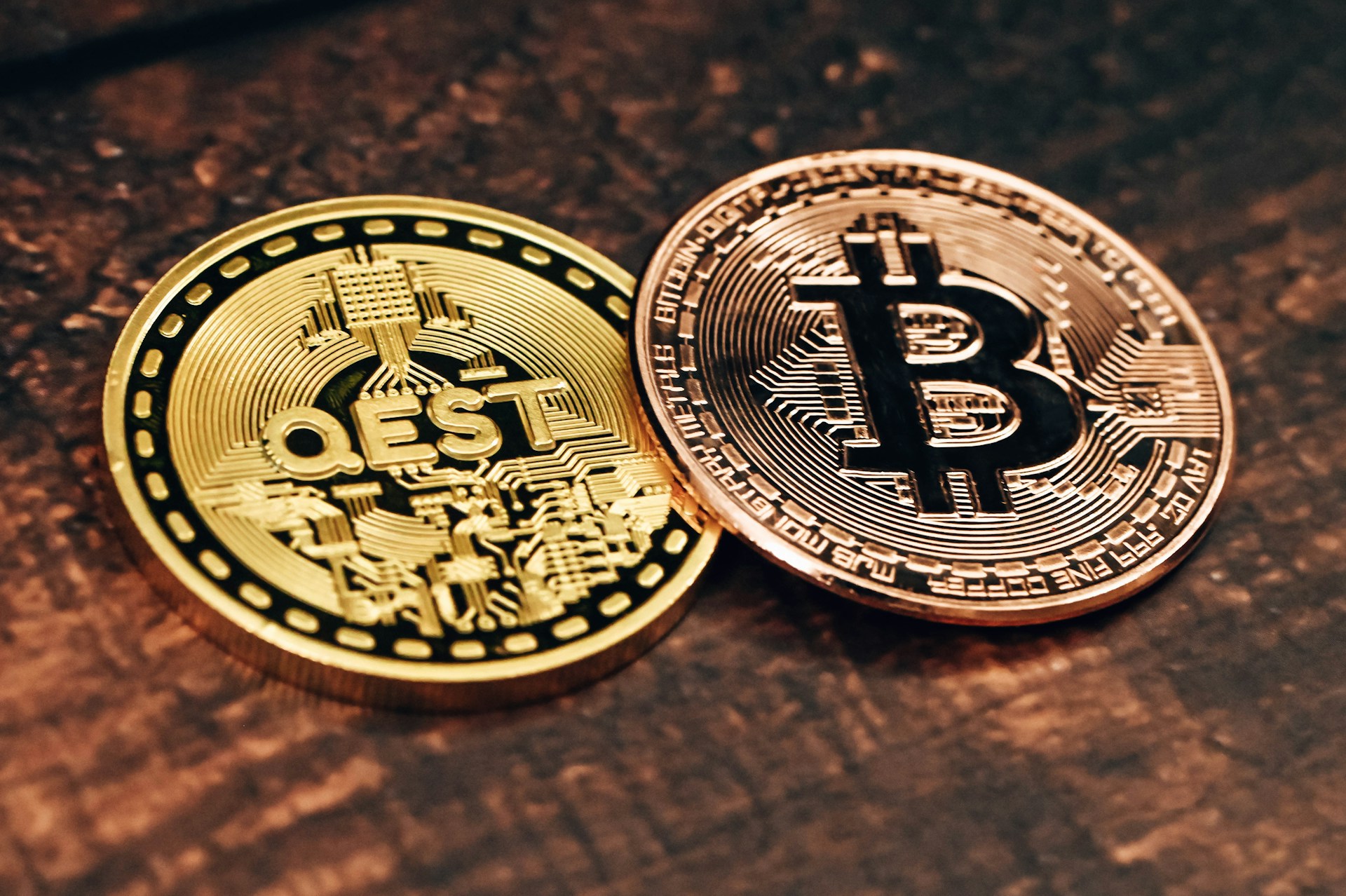Bitcoin, the pioneering cryptocurrency, was introduced in 2009 by an anonymous entity known as Satoshi Nakamoto. It operates on a decentralized network using blockchain technology, which ensures transparency and security through a distributed ledger system. Unlike traditional currencies issued by governments, Bitcoin is not controlled by any central authority, making it immune to inflationary pressures and political interference.
The total supply of Bitcoin is capped at 21 million coins, a feature designed to create scarcity and potentially increase its value over time. This unique structure has attracted a diverse range of investors, from tech enthusiasts to institutional players. To buy Bitcoin, one must first understand the fundamental concepts surrounding it.
Bitcoin transactions are recorded on the blockchain, which is a public ledger that anyone can access. Each transaction is verified by network nodes through cryptography and added to the blockchain in blocks. This process ensures that the same Bitcoin cannot be spent twice, a problem known as double-spending.
When purchasing Bitcoin, individuals typically use fiat currency, such as the US dollar or euro, to exchange for Bitcoin through various platforms. Understanding how these transactions work is crucial for anyone looking to enter the world of cryptocurrency. Learning how to buy bitcoin can feel overwhelming, but MEXC simplifies everything. Whether you want to invest a little or a lot, you can easily deposit money and exchange it for BTC. Their interface is intuitive, making it perfect for beginners and experienced traders alike.
Choosing the Right Bitcoin Exchange or Platform
Selecting the appropriate exchange or platform for buying Bitcoin is a critical step in the investment process. There are numerous exchanges available, each with its own set of features, fees, and security measures. Some of the most popular exchanges include Coinbase, Binance, Kraken, and Bitstamp.
When evaluating these platforms, potential buyers should consider factors such as user experience, transaction fees, available payment methods, and customer support. For instance, Coinbase is often recommended for beginners due to its user-friendly interface and educational resources, while Binance offers a wider range of cryptocurrencies and lower trading fees for more experienced traders. Security is another paramount consideration when choosing an exchange.
The cryptocurrency space has seen its fair share of hacks and scams, leading to significant losses for investors. It is essential to research the security measures implemented by an exchange, such as two-factor authentication (2FA), cold storage of funds, and insurance policies against breaches. Additionally, reading user reviews and checking the exchange’s history can provide insights into its reliability and trustworthiness.
By carefully assessing these factors, investors can make informed decisions that align with their risk tolerance and investment goals.
Setting Up a Wallet for Storing Bitcoin
Once an individual has purchased Bitcoin, the next step is to set up a wallet for secure storage. A cryptocurrency wallet is a digital tool that allows users to store, send, and receive Bitcoin and other cryptocurrencies. There are several types of wallets available, each with its own advantages and disadvantages.
The primary categories include hardware wallets, software wallets, and paper wallets. Hardware wallets, such as Ledger Nano S or Trezor, are physical devices that store private keys offline, providing a high level of security against online threats. They are ideal for long-term investors who prioritize security over convenience.
Software wallets can be further divided into desktop wallets, mobile wallets, and web wallets. Desktop wallets are installed on a computer and offer more control over private keys compared to web wallets, which are hosted online by third-party services. Mobile wallets provide convenience for everyday transactions but may be more vulnerable to malware or hacking attempts.
Paper wallets involve printing out the private keys on paper and storing them securely; however, they require careful handling to avoid loss or damage. Ultimately, the choice of wallet depends on individual preferences regarding security, accessibility, and ease of use.
Making Your First Bitcoin Purchase
With a wallet set up and an exchange selected, making your first Bitcoin purchase can be an exciting yet nerve-wracking experience. The process typically begins by creating an account on the chosen exchange and completing any necessary identity verification steps. This may involve providing personal information and uploading identification documents to comply with regulatory requirements.
Once the account is verified, users can deposit funds using various payment methods such as bank transfers, credit cards, or even PayPal in some cases. After funding the account, users can navigate to the trading section of the platform to place their first order. Most exchanges offer different types of orders: market orders allow users to buy Bitcoin at the current market price, while limit orders enable them to set a specific price at which they wish to buy.
For beginners, market orders may be more straightforward as they execute immediately at the prevailing price. Once the order is placed and confirmed, the purchased Bitcoin will be credited to the user’s account on the exchange. It is advisable to transfer the Bitcoin from the exchange to a personal wallet for enhanced security after the purchase is complete.
Understanding Security and Best Practices for Buying and Storing Bitcoin
Security is paramount in the world of cryptocurrency due to its digital nature and susceptibility to cyber threats. Investors must adopt best practices to safeguard their assets effectively. One fundamental principle is to enable two-factor authentication (2FA) on all accounts associated with cryptocurrency transactions.
This adds an extra layer of security by requiring a second form of verification—such as a code sent to a mobile device—before allowing access to accounts or executing trades. Another critical aspect of security involves keeping private keys confidential. Private keys are essential for accessing and managing Bitcoin holdings; if someone gains access to these keys, they can control the associated funds entirely.
Users should avoid sharing their private keys with anyone and consider using hardware wallets for long-term storage since they keep private keys offline and away from potential online threats. Regularly updating software wallets and ensuring that devices used for transactions are free from malware can further enhance security measures.
Monitoring and Managing Your Bitcoin Investment
Once an individual has acquired Bitcoin, ongoing monitoring and management of the investment become essential components of a successful strategy. The cryptocurrency market is known for its volatility; prices can fluctuate dramatically within short periods due to various factors such as market sentiment, regulatory news, or technological developments. Investors should stay informed about market trends by following reputable news sources and engaging with online communities dedicated to cryptocurrency discussions.
Additionally, setting clear investment goals can help guide decision-making processes regarding buying or selling Bitcoin. Some investors may adopt a long-term holding strategy (often referred to as “HODLing”), while others may prefer active trading based on short-term price movements. Utilizing tools such as price alerts or portfolio tracking applications can assist in managing investments effectively.
By regularly reviewing their positions and adjusting strategies based on market conditions or personal financial goals, investors can navigate the complexities of the cryptocurrency landscape with greater confidence. In conclusion, understanding Bitcoin involves grasping its foundational principles and navigating the intricacies of buying and storing it securely. Choosing the right exchange is crucial for facilitating transactions while ensuring safety measures are in place.
Setting up a wallet tailored to individual needs enhances security for stored assets. Making that first purchase marks an important milestone in an investor’s journey into cryptocurrency; however, ongoing vigilance regarding security practices remains vital in this rapidly evolving space. Finally, actively monitoring investments allows individuals to adapt their strategies in response to market dynamics while pursuing their financial objectives in the world of Bitcoin.



